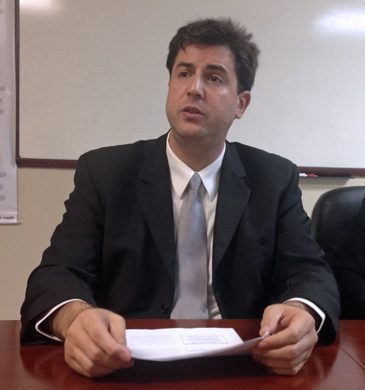Study: 12% of U.S. mainland-born P.R. residents left island post-hurricane

The population born in the U.S. mainland residing in Puerto Rico is estimated at 166,000 — a number that was reduced by 12% between 2010 and 2017, according to a study released by the Censal Information Center, at the University of Puerto Rico in Cayey.
The research presents a description of demographic and socioeconomic variables aligned with the latest data from the of 2017 Puerto Rico Community Survey.
“The population born in the United States [mainland] that resides in Puerto Rico is relatively high, with about 166,000 people and is not immune to the population reduction observed in Puerto Rico,” said José Caraballo-Cueto, director of the Center.
“However, the population reduction of this segment was close to 12% between 2017 and 2018, two percentage points less than the reduction of the entire population of Puerto Rico,” he said.
“Since most are considered Latino, it can be established that there is evidence of bi-directional migration. That is, Latinos emigrating from Puerto Rico to the United States and other groups immigrating from the United States to Puerto Rico,” he said.
According to the study, for the 2013-2017 period, 57.5% of people born in the U.S. mainland who live in Puerto Rico were between 25-54 years old, with a low proportion of children or people over 65. This contrasts with the distribution of people born in Puerto Rico, which had a 22% population of children with 19% of people over 65.
The 2017 Puerto Rico Community Survey shows that 26% of the population over 25 years old born in Puerto Rico did not finish high school. This contrasts with people born in the United States who live in Puerto Rico, of which 11% did not finish high school.
“With the exception of the group with high school diploma, the population born in the United States has a better educational profile in all post-secondary classifications,” Caraballo-Cueto said.
“These better educational achievements can explain the difference in income between the two groups. The economic status of people born in the [continental] United States was on average higher than those born in Puerto Rico or elsewhere,” he said.
For the period between 2013 and 2017, 40% of the population born in Puerto Rico reported annual incomes lower than $10,000 and 3.5% said they made more than $65,000 in annual income. In contrast, the population born in the [continental] United States that lives in Puerto Rico reported 31.6% and 6.1% respectively in those categories, according to the research.
In the period between 2010 and 2013. there was an average of 3,505 people born in the United States [mainland] who received passive income (for example, interest, dividends and rent) in Puerto Rico. The average passive income reported was around $17,290.
In the 2013-17 period, the number of people with this income remained stable, despite the fact that the total number of people born in the United States decreased, the study showed.
“A significant change between the two periods is that the average passive income increased substantially to $42,376. This may be the result of Law 22 of 2012, which grants an exemption on passive income to millionaires abroad who move to Puerto Rico,” Caraballo-Cueto said.
A detail that stands out from the research is that not all people born in the United States and living in Puerto Rico have a good command of English. Some 45% of these people reported not mastering English very well. While 10% said they only speak English.
“The fact that 90% of these people are Latinos and 85% consider themselves Puerto Ricans can explain their degree of English proficiency. Among people born in Puerto Rico there are 5% who only speak English and 78% who reported not mastering English very well,” said Caraballo Cueto, who is a PhD in economics.











